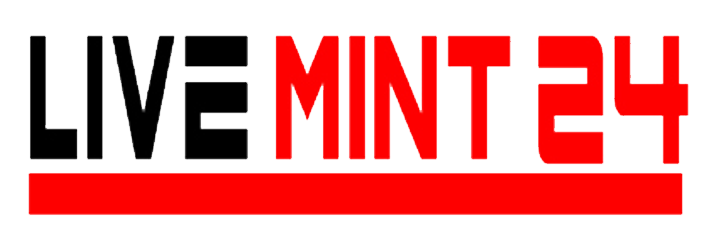1. The Cost Squeeze Facing Generative AI
Large language models are brilliant storytellers, translators and coders, yet their price tags can flatten an early-stage balance sheet. Renting a single NVIDIA A100 GPU can exceed 2 000 USD a month, and inference bills balloon as user traffic grows. Add six-figure salaries for scarce LLM engineers, plus compliance reviews for every data set, and most founders discover that “AI first” is easier to pitch than to pay for.
Those budget realities have given rise to a new mantra in boardrooms and tech accelerators alike: lean generative AI. The idea is simple—use smaller, purpose-built models, optimise inference, and ship value quickly. That playbook is precisely where InnoApps has carved its niche, positioning itself as a generative ai development company that helps teams deploy production-ready features without burning an extra zero on the cloud invoice.
2. The Economics Behind Generative AI
Training GPT-scale models can cost tens of millions of dollars. Even fine-tuning an open-weights model on proprietary data can run into five figures once GPU time, data preparation, and MLOps overhead are tallied. Yet McKinsey estimates generative AI could inject up to 4.4 trillion USD into the global economy annually—so the upside is clear for firms that control the downside.
Three expense lines dominate most projects:
- Compute: On-demand A100 or H100 instances, often 20–30 USD per hour.
- Tokens: Every prompt and response accrues usage costs on hosted models.
- Security and governance: Privacy reviews, data-loss-prevention scans, and audit logging.
Reducing any one of these levers adds runway. Reducing all three can make a generative feature cash-positive within a single quarter.
3. Enter InnoApps: A Lean Alternative
Founded by a duo of ex-cloud architects, InnoApps bet early that smaller, smarter models would out-perform hulking monoliths for most business tasks. Today the firm has 120 engineers specialising in applied NLP, reinforcement learning, and MLOps. ISO 27001 and SOC 2 controls cover every engagement, but the signature move is a modular fine-tuning pipeline that re-uses open-weights models, trims GPU hours, and still delivers brand-safe answers.
4. What “Lean” Looks Like in Practice
Small-but-Mighty Domain Models
Instead of training a general model on terabytes of internet text, InnoApps applies Low-Rank Adaptation (LoRA) or QLoRA to precision-tune open weights on client data. The result: domain accuracy jumps while GPU demands fall by up to 80 percent.
Retrieval-Augmented Generation (RAG)
A vector index of verified documents feeds the LLM only the facts it needs, cutting hallucinations and reducing token spend. One ecommerce client now answers 96 percent of customer queries using RAG output that costs less than a live-chat contractor.
GPU-Efficient Hosting
Compiled ONNX models served via Triton or AWS Inferentia2 can slash inference latency in half—and slash the bill right beside it. Autoscaling rules spin instances down overnight, so no one pays for idling silicon.
5. Inside the Four-Week Proof-of-Value Sprint
| Week | Focus | Concrete Deliverables |
| 1 | Data curation | Cleansed, tagged corpus. Privacy assessment. |
| 2 | Fine-tune and evaluate | LoRA checkpoints, BLEU / ROUGE scores, bias report. |
| 3 | UX wireframes | Click-through prototype, conversation flows, brand tone guide. |
| 4 | Secure deploy | Docker image, Helm chart, SOC 2 evidence pack, uptime SLA. |
By day 28, stakeholders interact with a functioning demo on their own data, not a sandbox prompt in a third-party UI.
6. Tooling That Keeps Costs in Check
- Hugging Face PEFT for lightweight parameter-efficient tuning
- LangChain agents to orchestrate query planning and tool use
- Llama-3 and Mixtral-8x7B for open-weights starting points
- Pinecone or Weaviate for scalable vector search
- AWS Inferentia2 or Azure NC-A100 for cost-optimised inference
7. Case Studies: Fact-Heavy and Fiscal
Australia – Insurance Chatbot
A mid-market insurer replaced IVR menus with an LLM-driven assistant. Average call-centre handle time dropped 32 percent within six weeks. The LoRA fine-tune ran on four A100 nodes for only 18 staff hours.
European Union – Pharma Text Summaries
Regulatory writers at a life-sciences firm must translate clinical findings into 24 languages. The new multilingual LLM drafts half the copy, reducing turnaround time by 50 percent while meeting EMA data-privacy rules.
8. Risks and How They Are Mitigated
Generative AI brings unique hazards—hallucinations, prompt injection, data leakage. InnoApps addresses them with a three-layer guardrail approach:
- Content filtering and profanity blocks at the output layer.
- RAG provenance tags that trace every answer back to a source document.
- Regular red-team drills that simulate jailbreak attempts before attackers do.
Teams ready to explore can contact the generative AI team and secure a slot on the next sprint calendar.


